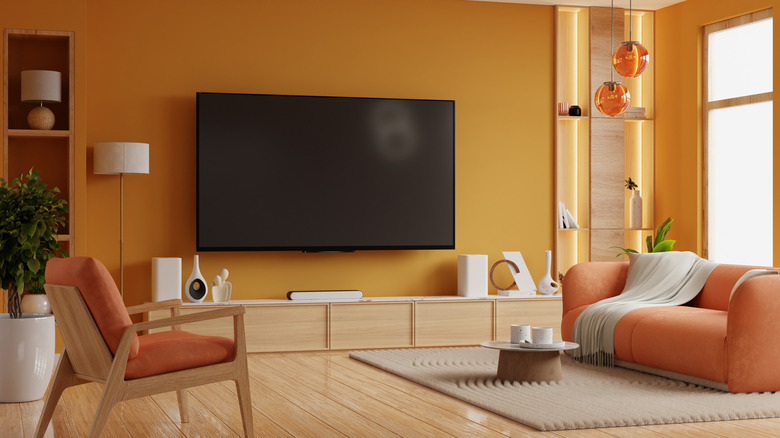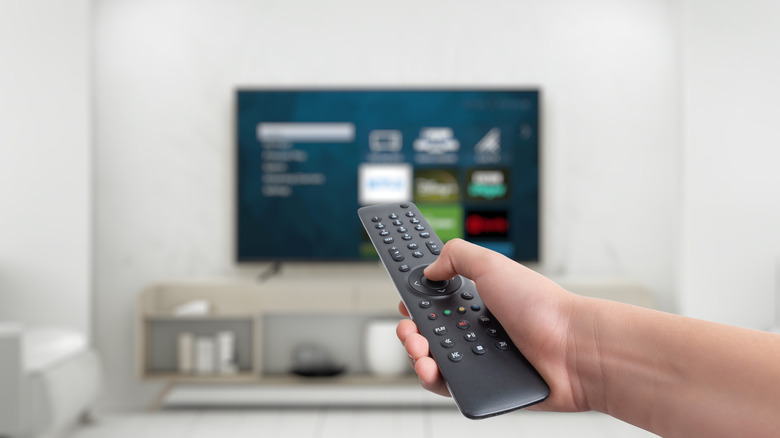3 Ways You're Ruining Your TV Without Realizing It
While your TV may be the centerpiece of your living room — the place where crime thriller nights, gaming sessions, and endless streaming marathons come to life – there are a few things you could be doing that are quietly shortening its lifespan. Unlike smartphones or laptops, TVs don't typically give obvious signs of wear until it's far too late. Colors fading, brightness dropping, or the screen beginning to look uneven — all thanks to habits that seem totally harmless. From the way you adjust picture settings to how you position it in your room, seemingly minor choices can affect how well your TV performs over time.
While most modern displays are built to last for years, everyday mistakes, like leaving your set on for hours, or keeping it in "torch mode" out of the box, can take a real toll on image quality and internal components. If you've invested in a quality OLED or QLED display, the last thing you want is to accidentally degrade its picture quality through simple oversight. Below, we'll break down three surprisingly common ways people ruin their TVs without even realizing it, and what you can do right now to keep yours looking as crisp, bright, and reliable as the day you bought it.
Don't crank up the volume all the way
Most people only use the TV's built-in speakers to watch shows, always increasing the volume to the max level to hear dialogues clearly. However, turning the volume all the way up results in distorted audio. When the volume is too high for the speakers, the amplifier becomes overdriven, and the sound you hear is distorted. Most modern TVs are designed to be ultra-thin, leaving little space for large, high-quality speaker drivers. So while the compact speakers found in modern smart TVs can produce decent quality at moderate volumes, they start to struggle to provide enough power to reproduce bass and midrange frequencies cleanly when pushed.
The best fix is to keep the volume below 75-80% and upgrade to an external soundbar and subwoofer combo, or a multi-channel speaker system to handle the heavy lifting of cinematic audio. Even a midrange soundbar will deliver much cleaner and fuller sound than your TV's built-in speakers, especially at higher volumes. Once you get a soundbar, there's no going back. You can hear dialogues even at low volume levels, with crystal clear audio.
Don't leave your TV switched on all day
If you think leaving a static image on your TV for a long time wasn't a big deal — that's how you burn out the screen on an OLED TV, only a few years after buying it. When a still image, such as a game pause menu, a news ticker, or a paused movie menu, stays on the screen for hours, certain pixels are forced to display the same color and brightness without variation. Over time, this uneven wear can lead to screen burn-in, where faint ghost images permanently linger on the screen even when watching different content. Burn-in happens because pixels in OLED and plasma TV panels use organic compounds that degrade with use over time. The more a pixel stays lit at high brightness, the faster it wears out.
LCD TVs aren't immune to burn-in either. While they may not experience the same type of burn-in that affects OLED panels, they can suffer from image retention, a process in which remnants of a static image temporarily remain visible due to charge build-up in the liquid crystals. To prevent this, you should avoid leaving your TV on pause for extended periods and turn on built-in screen savers or pixel-shifting features if your TV supports them. Reducing brightness also helps slow wear. Ultimately, screens are designed for motion, and regularly changing what's displayed ensures your picture stays clean, uniform, and free of permanent burn-in marks.
Keep your smart TV updated
You might think it's ok to skip software updates on your smart TV, but it can actually hurt performance, security, and even picture quality over time. Just like your smartphone or laptop, your smart TV runs on an operating system that relies on regular updates to stay optimized and secure. Smart TV manufacturers release firmware updates to fix bugs, patch security vulnerabilities, and improve compatibility with streaming apps. If you ignore these updates, you risk dealing with laggy menus, crashing apps, or losing access to key streaming services when they stop supporting outdated software. Some updates even fine-tune image processing, HDR performance, or HDMI input stability, meaning your TV may look and sound better after an update.
Security is another big reason to stay updated. Smart TVs connect to your Wi-Fi network and can be vulnerable to cyberattacks if left unpatched. Outdated firmware can leave the door open for hackers to access your personal data or take control of your smart TV remotely. In short, updates aren't just for new features; they're for keeping your TV reliable and safe. If you don't want to deal with frequent update prompts, you should enable automatic updates in your smart TV's settings. That way, your smart TV can handle the maintenance in the background while you focus on watching what you want.



